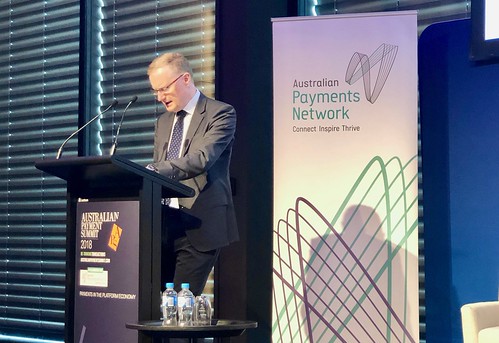I had the good fortune to attend the Australian Payment Summit 2018 in Sydney this year, chairing the panel on Digital Currency and giving the first day closing keynote on the impact of artificial intelligence in the transaction space (I was developing the “where are the customers’ bots” theme).
Naturally, one of the areas that I wanted to find out about was digital identity. As in many other countries, Australia is trying to deal with a complex mixture of requirements, goals and constraints for some form of digital identity infrastructure and it is far from clear what is going to happen. In the lead up to the event, the CTO of Westpac was quoted saying that “if you are going to move to a more open data-connected world, which we clearly are… you have to solve the problem of digital identity”. Well, yes. I agree 100%.
But how?
There is scepticism about a government solution. The Department of Home Affairs is looking at a single national digital identifier, which I am not sure is the right way forward since identity, as far as I am concerned, should be a menu. A recent report from Australian Strategic Policy Institute (a think tank) cautioned that an attempt to create some sort of digital identity could end up as “a repeat of the failed attempt to roll out the Australia Card” unless the government builds in privacy which, naturally, I agree with. So perhaps it is better to look to the private sector.
With a private sector solution, my preferred first step, of course, is to have regulated financial institutions do it. In Australia,this is indeed what is happening. Their approach is to have the Australian Payment Network (AusPayNet) tackle the problem under the auspices of the Australian Payments Council and they have been doing an interesting experiment in “agile” development to begin to explore what might be practical in the mass market, but it is still not clear how the banks will work together to deliver a mass-market solution that will be the platform that a modern economy needs. And, it turns out, I am not the only one.
In his keynote speech at the Summit the Governor of the Reserve Bank of Australia (RBA), Philip Lowe, said that digital identity is likely to become increasingly important as more and more activity takes place online and went on to say that the RBA is "highly supportive" of industry collaboration on this issue and views it as important that substantive progress is made. During the Q&A session he said (I paraphrase) “we all agree that something must done, but we can’t agree on what is it” and that the “institutions will need to compromise in the national interest”. I think these are very interesting (and very insightful) remarks.
This led me to

Comments
Post a Comment